ReJournal
A private journaling device for depression recovery.
Record, Reflect, Reach out.
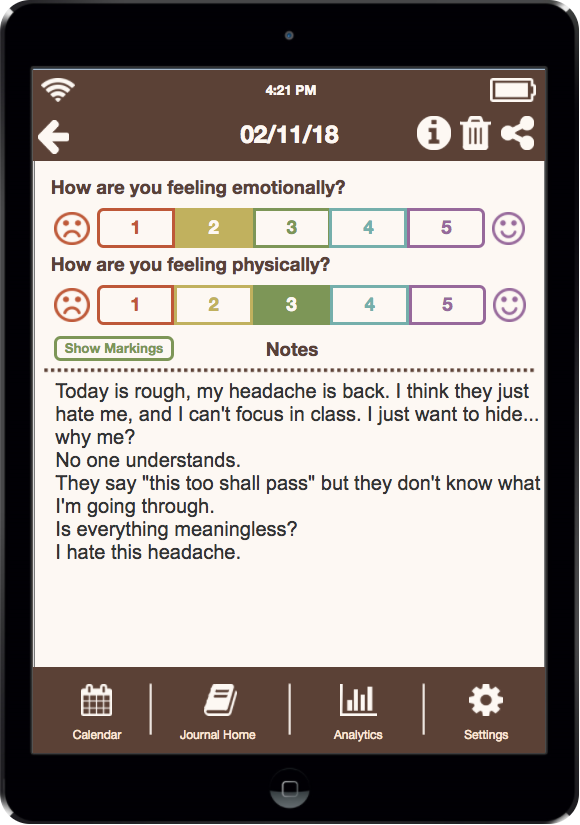
A private journaling device for depression recovery.
Record, Reflect, Reach out.

Depression is not an uncommon condition that affects many individuals. In fact, 70% of those who commit suicide have reportedly been diagnosed with depression. The problem is that having to cope with depression alone is difficult. And even when receiving help from a counselor, some may still have trouble establishing a consistent support system outside in their daily lives, once again leaving them alone to manage thier condition. ReJournal was created to fill this gap.
ReJournal grew out of our desire to help. We knew we couldn't replace professional counselors and therapists because they were still a necessary part of recovery and their expertise was irreplaceable. Instead we looked into recovery plans and techniques already used by individuals to see if we could enhance any of their tools. We found that while plans varied, the importance of reflection did not.
We began by making a paper prototype of a journaling device. An important part of our process was trying to figure out how to differentate the device from existing journaling tools like apps. After receiving feedback from our peers and users, we iterated and fixed our flaws. This included correcting confusing icons as well as adding tools that users wanted but were not yet present in our design. This device eventually became ReJournal.
ReJournal is a dedicated device for journaling that aims to help individuals diagnosed with depression with their recovery, particularly during times when they have less support such as between counseling sessions. ReJournal encourages users to reflect on how they are feeling and to write down what is on their mind and provides features to assist with reflection. Additionally, ReJournal aims to provide communication pipelines that users can utilize in their time of need, cultivating a consistent support system for users.
Create a journal entry and over time, use analytics recorded by the device to review your progress.
Using the scales from your entry, the journal will generate a bar graph for the analytics page to display how you have been feeling over a period of time.
As you write, keywords and phrases will be tracked and organized into different reflection categories. In the analytics page, you can then view how many keywords and phrases were detected in your entries for a given day as a bar graph.
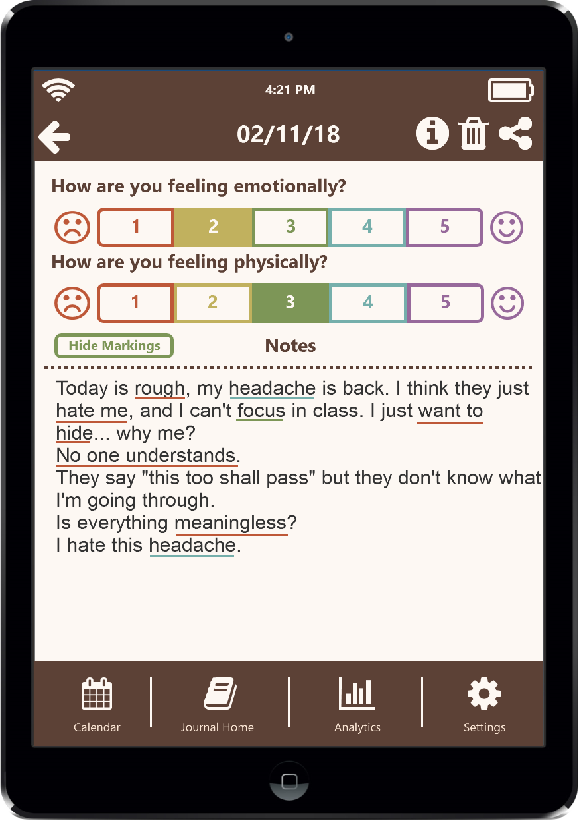

Reach out to supporters when you've been feeling down for a long time or when you're contemplating risky behavior.
Based on your entries, when the device detects a consistent downward trend or that you are in danger, such as when you are considering self-harm, it will prompt you to reach out to one of your supporters. Options include calling or texting one of your contacts and chatting anonymously with an online therapist. If you repeatedly dismiss the prompt or dismiss it while displaying risky thoughts, an automatic text will be sent to your supporters asking them to check in with you.
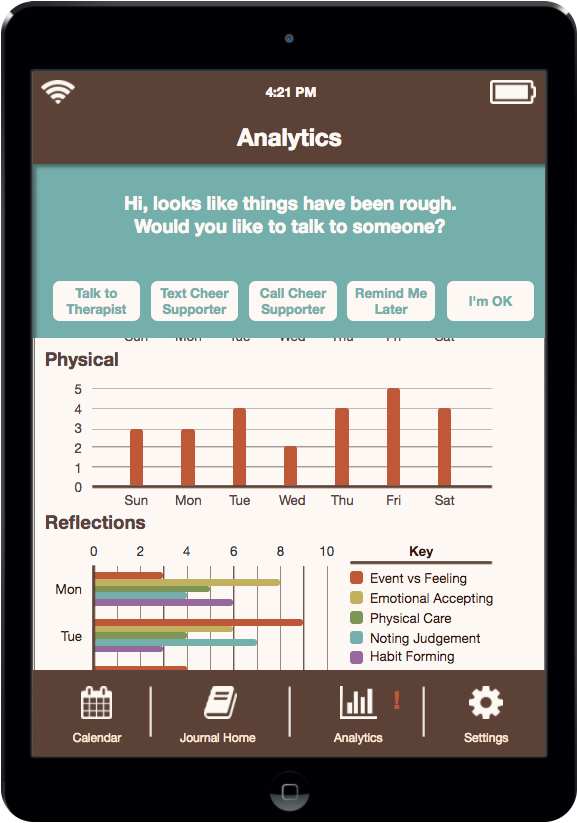
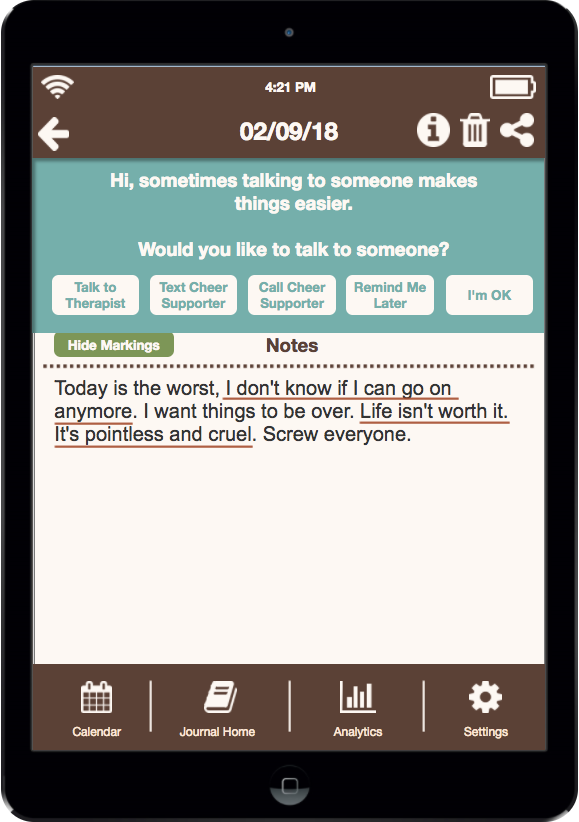

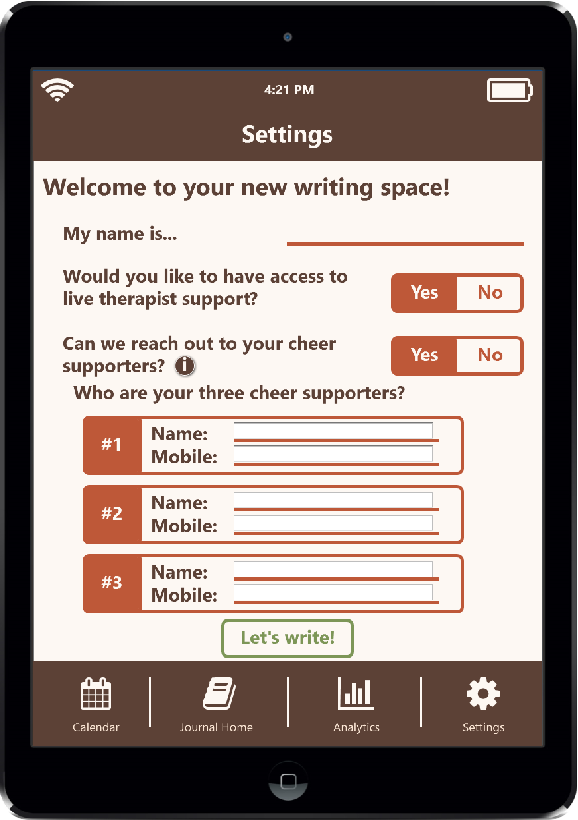
The settings page allows users to decide whether they want the device to offer chatting anonymously with a therapist as an option in the SOS reach out feature. It also allows users to enable or disable the SOS reach out feature. Should the user enable it, they will be prompted to enter contact information of three supporters who they (and the device) can reach out to.

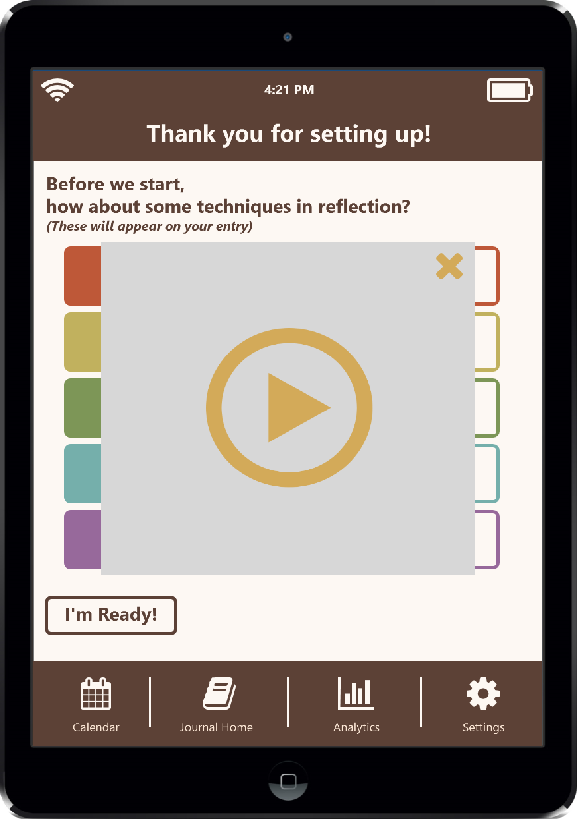
The education page explains the five different reflection categories that the device will be using to organize the keywords and phrases it detects in your entries. Clicking on a category brings up a video that will breifly explain what that particular category means.

The table of contents allows users to quickly see all of the entries they've made so far. From the table of contents, users can also create a new entry.

The calendar is an alternate view for users to quickly see all of the entries they've made so far. Each day with an entry is labeled with symbols that indicate which reflection categories the user wrote about.

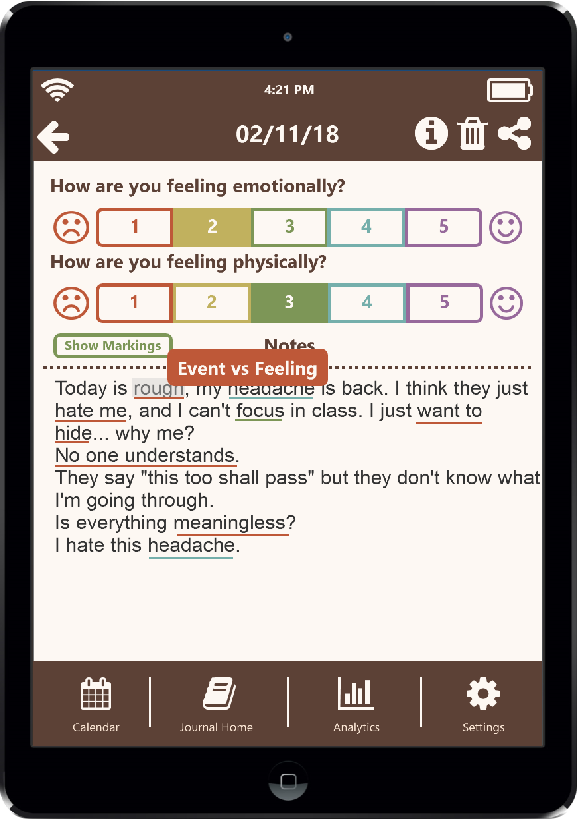
The entry pages include the option to show markings which shows users which keywords and phrases the device has tracked and the related reflection category the device has identified. Hovering over the word also tells users exactly what the category is in case the user is not yet familiar with the mapping.
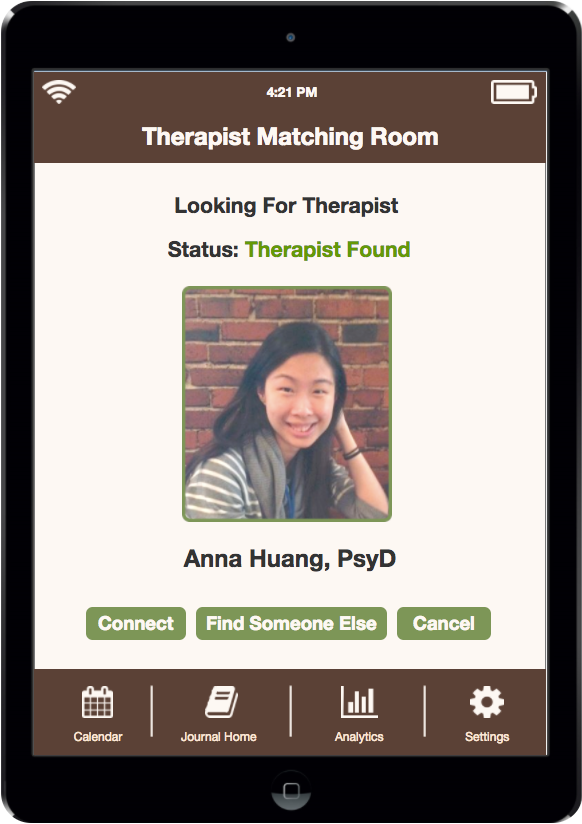
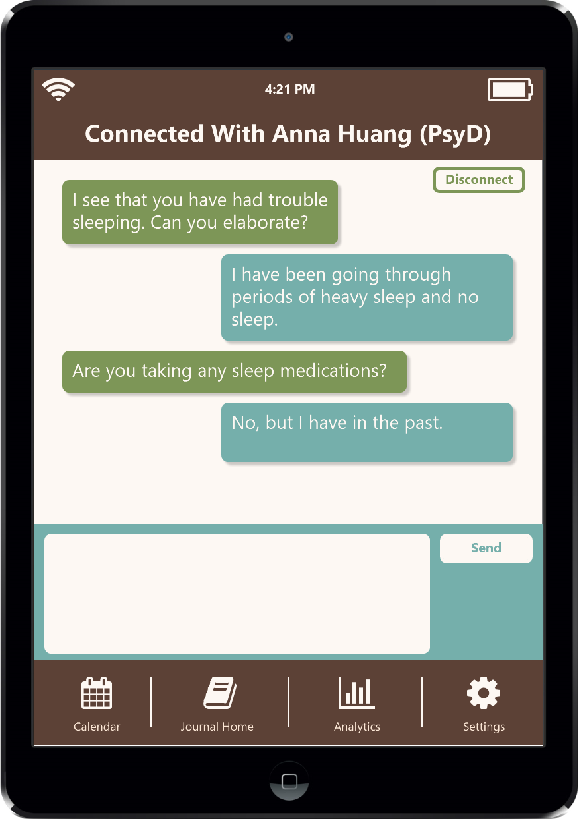
The therapist chat room is an option offered as part of the SOS reach out feature. If chosen, users will be connected with an online therapist who they can then chat with anonymously.
Your data is stored locally and can only be shared by you.
Our SOS reach out feature is an opt-in feature that you can enable and
disable. If you have given the device permission to reach out on your behalf, it will only ever send
a message asking your supporters to check in with you; it will not disclose any specific information.
For each of your entries, the device will keep track of how you rate your
emotional and physical wellbeing.
Additionally, while you write your entries, the device will keep track of
keywords and phrases and categorize them according to five reflection categories: (1) Event vs.
Feeling, (2) Emotional Accepting, (3) Physical Care, (4) Noting Judgment, and (5) Habit Forming.
The devices uses the scale data to generate the graphs you see in the
analytics page to show you your progress over time.
It also uses the reflection data to generate a graph that displays how many
keywords and phrases you've written fall into a particular refleciton category for a given
day.
Additionally, the scale and reflection data is used in the background to monitor how
you are doing so that if the device detects that you are having a hard time, it can prompt and give you
the opportunity to initiate contact with someone and also act on your behalf if it believes you need
help.
Your data is stored locally and only shared if you yourself choose to share an entry with a supporter.
Anna Huang
Information ScienceJessica Nguyen
Computer ScienceArnie Techavimol
Computer ScienceGabe Carroll
Computer ScienceTo learn more about ReJournal and its creation,
check out the documents below.